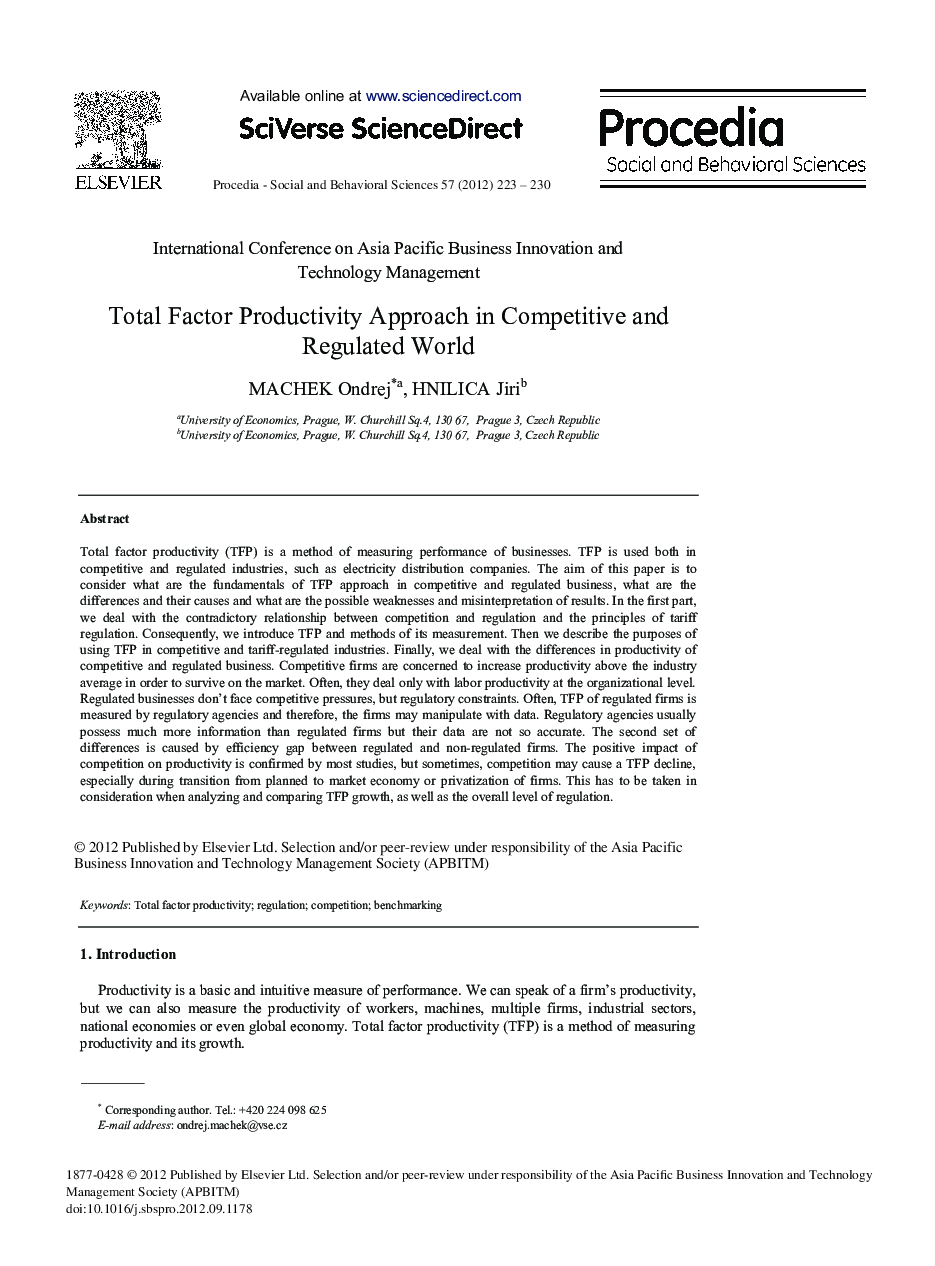| Article ID | Journal | Published Year | Pages | File Type |
|---|---|---|---|---|
| 1120884 | Procedia - Social and Behavioral Sciences | 2012 | 8 Pages |
Abstract
Total factor productivity (TFP) is a method of measuring performance of businesses. TFP is used both in competitive and regulated industries, such as electricity distribution companies. The aim of this paper is to consider what are the fundamentals of TFP approach in competitive and regulated business, what are the differences and their causes and what are the possible weaknesses and misinterpretation of results. In the first part, we deal with the contradictory relationship between competition and regulation and the principles of tariff regulation. Consequently, we introduce TFP and methods of its measurement. Then we describe the purposes of using TFP in competitive and tariff-regulated industries. Finally, we deal with the differences in productivity of competitive and regulated business. Competitive firms are concerned to increase productivity above the industry average in order to survive on the market. Often, they deal only with labor productivity at the organizational level. Regulated businesses don't face competitive pressures, but regulatory constraints. Often, TFP of regulated firms is measured by regulatory agencies and therefore, the firms may manipulate with data. Regulatory agencies usually possess much more information than regulated firms but their data are not so accurate. The second set of differences is caused by efficiency gap between regulated and non-regulated firms. The positive impact of competition on productivity is confirmed by most studies, but sometimes, competition may cause a TFP decline, especially during transition from planned to market economy or privatization of firms. This has to be taken in consideration when analyzing and comparing TFP growth, as well as the overall level of regulation.
Related Topics
Social Sciences and Humanities
Arts and Humanities
Arts and Humanities (General)
Authors
Machek Ondrej, Hnilica Jiri,
